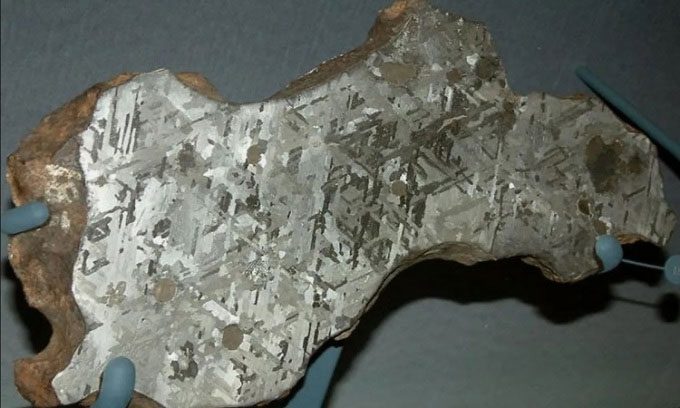The meteorite in Diablo Canyon, Arizona, contains diamonds with unusual structures, formed from a collision that occurred tens of thousands of years ago.

Meteorite sample in Diablo Canyon. (Photo: Wikimedia)
Scientists employed advanced imaging techniques to examine the diamonds from the Diablo Canyon meteorite, discovering that they are not ordinary gemstones, according to IFL Science. The Diablo Canyon meteorite fell approximately 50,000 years ago, creating a crater, one of the most well-preserved impact craters in the world. In a study published in 2022, researchers indicated that this new type of rock not only exhibits hardness akin to regular diamonds but also possesses unusual ductility. Moreover, they have properties that are easily adjustable, showing potential for use in electronic devices.
Diamonds used in jewelry are composed of carbon atoms arranged in a cubic structure, with each atom bonded to four other atoms, sometimes interrupted by other elements, contributing to their color. Lonsdaleite is a rare form of carbon first discovered in 1967 within the Diablo Canyon meteorite. Previously, researchers believed it formed from carbon atoms arranged in a hexagonal lattice, thus classifying it alongside other carbon allotropes such as graphite, amorphous carbon graphene, and graphyne.
However, upon examining lonsdaleite using Raman spectroscopy and crystallography, Dr. Péter Németh from the Geological and Geochemical Research Institute in Hungary found that lonsdaleite actually consists of interleaved cubic diamonds and graphene, referring to this combination as diaphite. When diamonds and graphene meet, unexpected layers separate. The amount of lonsdaleite available is too small to test some of its characteristics. Nevertheless, the model suggests it could be used to design ultra-hard yet flexible materials, promising numerous applications ranging from abrasives, electronics, nanomedicine, to laser technology.





















































